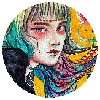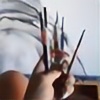HOME | DD
 jane-beata — PE: The Impact of Color
jane-beata — PE: The Impact of Color
Published: 2012-12-20 19:06:12 +0000 UTC; Views: 25627; Favourites: 317; Downloads: 0
Redirect to original
Description
body div#devskin8922161 .gr-box { overflow:visible; background:transparent; margin:190px auto 0px auto; position:relative; padding:0px 10px 10px 10px; } body div#devskin8922161 .gr-top { display:none; } body div#devskin8922161 .gr-top .gr { display:none; } body div#devskin8922161 .gr-top h2 img { display:none; } body div#devskin8922161 .gr-top h2 { display:none; } body div#devskin8922161 .gr-body { background:#dae4d9 url(https://fc07.deviantart.net/fs71/o/2012/235/6/f/322748439_464982_bggrad.png) 0px 0px repeat-x; border:1px solid #a6b2a6; overflow:visible; color:#5d625d; line-height:20px; padding:30px 0px 0px 0px; border-radius:6px; -moz-border-radius:6px; -webkit-border-radius:6px; border-radius:6px; -moz-border-radius:6px; -webkit-border-radius:6px; box-shadow:0px 1px 5px #8c9688; -moz-box-shadow:0px 1px 5px #8c9688; -webkit-box-shadow:0px 1px 5px #8c9688; box-shadow:0px 1px 5px #8c9688; -moz-box-shadow:0px 1px 5px #8c9688; -webkit-box-shadow:0px 1px 5px #8c9688; } body div#devskin8922161 .gr { background:transparent; border:none; } body div#devskin8922161 .gr-body .gr { padding:0px 20px 0px 20px; } body div#devskin8922161 .gr-body .gr .text { padding:10px 0px 0px 0px; } body div#devskin8922161 i.tri { display:none; } body div#devskin8922161 i.gr1 { display:none; } body div#devskin8922161 i.gr2 { display:none; } body div#devskin8922161 i.gr3 { display:none; } body div#devskin8922161 i.gb { display:none; } body div#devskin8922161 .top { position:absolute; top:-174px; left:0px; right:0px; width:100%; text-align:center; } body div#devskin8922161 .top img { margin:0px auto; } body div#devskin8922161 div.board { width:360px; height:217px; background:url(https://fc02.deviantart.net/fs71/o/2012/235/8/a/322748439_464983_pinboard.png) top right no-repeat; text-align:center; z-index:99; margin:-50px auto 0px auto; } body div#devskin8922161 div.board .shadow-holder { float:left; top:0px!imporant; left:0px!important; } body div#devskin8922161 div.board img.avatar { position:absolute !important; display:block; margin:0px 0px 0px 0px; bottom:-18px; right:-75px; } body div#devskin8922161 span.board { display:none; } body div#devskin8922161 div.board .stamp { position:relative !important; left:20px; top:50px; } body div#devskin8922161 div.board .stamp img { box-shadow:0px 1px 5px #4d1e1c; -moz-box-shadow:0px 1px 5px #4d1e1c; -webkit-box-shadow:0px 1px 5px #4d1e1c; box-shadow:0px 1px 5px #4d1e1c; -moz-box-shadow:0px 1px 5px #4d1e1c; -webkit-box-shadow:0px 1px 5px #4d1e1c; } body div#devskin8922161 div.board .gallery { position:relative !important; left:24px; top:80px; color:#fff !important; font-size:20px; font-weight:bold; text-align:right; width:225px !important; text-shadow:#4d1e1c 0px 1px 3px; } body div#devskin8922161 div.board a { color:#fff !important; font-size:20px; font-weight:bold; } body div#devskin8922161 a { color:#B73E62; text-decoration:none; } body div#devskin8922161 a:hover { color:#E43A5D; text-decoration:none; } body div#devskin8922161 ul { margin:0px 0px 0px 0px!important; } body div#devskin8922161 li { list-style:none!important; margin-left:-35px!important; } body div#devskin8922161 li li { list-style-image:url(https://fc07.deviantart.net/fs71/o/2012/235/9/b/322748439_464984_bullet.gif)!important; margin-left:18px!important; } body div#devskin8922161 li b { color:#fff !important; font-size:14px; font-weight:bold; text-shadow:#8c9688 0px 1px 3px; padding:0px 12px 0px 0px; } body div#devskin8922161 li b sup { font-size:10px; font-weight:normal; } body div#devskin8922161 .list { display:none!important; } body div#devskin8922161 .bottom { position:absolute; right:6px; bottom:6px; color:#DAE4D9!important; z-index:99; padding:0px 0px 0px 0px!important; height:27px; font-size:0px; } body div#devskin8922161 .bottom .commentslink { font-size:0px; background:url(https://fc06.deviantart.net/fs71/o/2012/235/a/9/322748439_464985_comment.png) top no-repeat; color:#DAE4D9!important; text-decoration:none!important; padding:0px; margin:0px 15px 0px 10px; text-align:center; width:24px!important; height:24px!important; display:block; } body div#devskin8922161 .clear_ { clear:both!important; } body div#devskin8922161 .week { background:url(https://fc08.deviantart.net/fs71/o/2012/235/2/8/322748439_464986_sepdots.gif) bottom repeat-x; padding:0px 0px 0px 80px; margin-top:-22px; } body div#devskin8922161 .week .cal { background:url(https://fc04.deviantart.net/fs71/o/2012/235/c/e/322748439_464987_cal.png) top no-repeat; width:76px; height:38px; float:left; margin:0px 0px 0px -80px; text-align:center; color:#f2fbf0; text-shadow:#8c9688 0px 1px 2px; } body div#devskin8922161 .week .left { position:relative !important; left:3px; top:-6px; float:left; margin:0px!important; font-size:17px; font-weight:bold; width:30px; height:30px; } body div#devskin8922161 .week .left b { color:#96a791!important; font-size:8px; line-height:14px; text-shadow:#fff 0px 1px 0px!important; } body div#devskin8922161 .week .right { float:right; position:relative !important; left:-3px; top:-26px; margin:0px!important; font-size:17px; font-weight:bold; width:30px; height:30px; } body div#devskin8922161 .week .right b { color:#96a791!important; font-size:8px; line-height:14px; text-shadow:#fff 0px 1px 0px!important; } body div#devskin8922161 .header { font-size:24px; margin-top:-12px; font-weight:bold; font-family:Trebuchet, Tahoma, Arial, sans-serif; padding:0px 0px 0px 5px; color:#B73E62; text-shadow:#fff 0px 1px 0px!important; } body div#devskin8922161 .links { float:right; position:relative; bottom:20px; right:0px; } body div#devskin8922161 .links img { padding-left:8px; } body div#devskin8922161 .buttons { position:absolute; left:20px; bottom:6px; color:#DAE4D9!important; z-index:99; padding:0px 0px 0px 0px!important; height:27px; font-size:0px; } body div#devskin8922161 .buttons img { padding-right:8px; }
1. - WHAT IS COLOR?
Color is the aspect of things that is caused by differing qualities of light being reflected or emitted by them, as received by the human eye and processed by the human brain. It is a function of light and biology, not an exact science, no two people can see it exactly the same.
The human eye and brain together translate light into color. Light receptors within the eye transmit messages to the brain, which produces the familiar sensations of color. Newton observed that color is not inherent in objects. Rather, the surface of an object reflects some colors and absorbs all the others. We perceive only the reflected colors. Thus, red is not "in" an apple. The surface of the apple is reflecting the wavelengths we see as red and absorbing all the rest. An object appears white when it reflects all wavelengths and black when it absorbs them all.
"Colors are the deeds of light, its deeds and sufferings."
(Johann Wolfgang von Goethe)
Red, green and blue are the additive primary colors of the color spectrum. Combining balanced amounts of red, green and blue lights also produces pure white. By varying the amount of red, green and blue light, a wide range of the colors in the visible spectrum can be produced.
The human eye can perceive more variations in warmer colors than cooler ones. About 8% of men and 1% of women have some form of color impairment. Most people with color deficiencies aren't aware that the colors they perceive as identical appear different to other people. Most still perceive color, but certain colors are transmitted to the brain differently.
"Color is a powerful physical, biological, and psychological force. When less color and less intense color is present, trace amounts and subtle differences become highly significant and are strongly felt. "
(John Paul Caponigro)
2. - HOW DOES COLOR AFFECT US?
Color is light and light is energy. Scientists have found out that actual physiological changes take place in human beings when they are exposed to certain colors. Colors can stimulate, excite, depress, tranquilize, increase appetite and create a feeling of warmth or coolness. This is known as chromodynamics.
Experiencing color is both objective and subjective - our personal and cultural associations affect this experience. Colors are seen as warm or cool mainly because of long-held (and often universal) associations. Yellow, orange and red are associated with the heat of sun and fire; blue, green and violet with the coolness of leaves, sea and the sky. Warm colors seem closer to the viewer than cool colors, but vivid cool colors can overwhelm light and subtle warm colors. Using warm colors for foreground and cool colors for background enhances the perception of depth.
"It is the eye of ignorance that assigns a fixed and unchangeable color to every object; beware of this stumbling block."
(Paul Gauguin)
Although red, yellow and orange are in general considered high-arousal colors and blue, green and most violets are low-arousal hues, the brilliance, darkness and lightness of a color can alter the psychological message. While a light blue-green appears to be tranquil, wet and cool, a brilliant turquoise, often associated with a lush tropical ocean setting, will be more exciting to the eye. The psychological association of a color is often more meaningful than the visual experience.
"Red is a color I've felt very strongly about. Maybe red is a very Indian color, maybe it's one of those things that I grew up with and recognize at some other level."
(Anish Kapoor)
Colors act upon the body as well as the mind. 




"What a horrible thing yellow is."
(Edgar Degas)
Brown is a natural color that evokes a sense of strength and reliability, bringing to mind feelings of warmth, comfort and security. Brown is considered a neutral color. Orange is an energetic color, bringing out excitement and enthusiasm. It is often used to draw attention, it's easier on the eyes as yellow but not as bold as red. Pink is essentially a light red, it's often associated with love and romance. It is thought to have a calming effect.
"With all their damned talk of modern painting, I've been forty years discovering that the queen of all colours is black!"
(Pierre-Auguste Renoire)
Black and White are not colors from the physical point of view, the first one absorbing all light in the color spectrum, the other reflecting all. Black is often used as a symbol of menace and evil, but it is also popular as an indicator of power. In many cultures, it associates with death and mourning; in ancient Egypt, it represented life and rebirth. In fashion, black is used for its slimming quality and associates with elegance. White represents purity and innocence, also hope. It is described as cold, bland and sterile. White helps reduce any nagging feelings of disappointment or drudge.
"White is poison to a picture: use it only in highlights."
(Peter Paul Rubens)
3. - COLOR HARMONY
In art as well as music, harmony comes from a pleasing arrangement of the parts. The science of color harmony categorizes colors and determines harmonious groupings, but where science becomes art is in knowing how to use these colors, in what proportions and in what order.
In color and music, contrasts intensify each other. Complementary colors bring out the attributes of each other. White becomes brighter on a black background, blue enhances the warmth of orange; opposite hues are especially attention-getting. This hue contrast can cause tension in the image, if you are using fully saturated colors. Complementary colors can be brought into harmony by reducing the saturation or by mixing a little of each color with the other.
"Why do two colors, put one next to the other, sing? Can one really explain this? No."
(Pablo Picasso)
This tension is at its strongest when large areas of complementary colors touch, this effect is known as simultaneous contrast. For the most part, it's visually disturbing and should be avoided. Separating large areas of complementary colors with a thin line of neutral white, gray or black will diminish the effect.
Varying the saturation or brightness of a color can cause light and dark contrasts. By simply working with complementary and analogous colors, a harmonious color scheme can easily be created. Pay attention to the saturation and brightness of the colors to prevent unexpected contrasts or to create intentional ones. If two colors are equal in saturation and proportions, the dominant color will be the one whose brightness is furthest from the background's. Similarly, if two colors have identical brightness, the dominant color will be the one whose saturation deviates more from that of the background.
"In order to change a color it is enough to change the color of its background.."
(Michel Eugene Chevreul)
How does color impact you, personally? What makes you choose one color over another? What's your favorite color combination?







"Color possesses me. I don't have to pursue it. It will possess me always, I know it. That is the meaning of this happy hour: Color and I are one. I am a painter."
(Paul Klee)
Related content
Comments: 52

I really REALLY appreciate the tips, many thanks
👍: 0 ⏩: 0

it is fascinating that in photography, but color photographers and black and white photographers like myself choose our medium for its impact. I suppose the same is true for monochrome charcoal, pencil, and ink versus their color counterparts.
👍: 0 ⏩: 0

The picture right after Picasso's quote doesn't show up, at least for me.
I've been thinking lately to pick up painting too as a hobby, only thing is that it's discouraging to see how many things i have to buy and to think that my works will look like, eh, not good at all
👍: 0 ⏩: 0

I love your article!! 
It was like going back to the class of Theory of Color at my university ^^. Luckily I'm going to have similar classes in the next semester and I am eager to learn more about of color.
My favorite colors are the purple and pink, and his different shades, because they give me peace of mind and are pleasing to the eye ^^. My favorite combinations are the Green and Yellow (analogous colors) and the Rainbow . I do not know why, but I love the rainbow and certainly I have a great taste for color. I love experimenting with different shades and color combination every time I make a piece of art, always making sure to match them well, that they are not very bright or unpleasant to behold. I have a tendency towards the beautiful in terms of the pictorial.
A few months ago I participated in a challenge of an artist here in DA, which took place over the course of 7 days and was to make a piece of art by day, using the designated color for each day:
It was a colorful and fun experience. I love this kind of challenges 
👍: 0 ⏩: 0

My favourite pieces of art are always ethereal with plenty of colours. When I started to use colour in my pictures, I was fearful and everything was bland. Now, I thrive using every colour in the spectrum, but dark turquoise, purple, and pink are three favourites I see popping up again and again.
👍: 0 ⏩: 0

If I see something painted with purple, dark purple, I usually like it (because is one of my favourite colours) and maybe if the same picture was made with another colour, I wouldn't pay attention... I think colours are powerful
Great article!!
👍: 0 ⏩: 0

It is true that if you are sensible to colors and wear darker clothes are more likely to be depressed than when you are wearing bright colors.
Also, how others treat you partly depends on the colors you wear. 

👍: 0 ⏩: 0

Wonderful article I took a color and design class in college it was awhile back and I loved it. This is a nice article well done
👍: 0 ⏩: 0

Nice article! I only know a little about color harmony, so I'm glad I happened to see this one. This can help with studying other people's styles and trying to start a new one for myself. :3
👍: 0 ⏩: 1

And one of my favorite color combos is a dark red and brown.
👍: 0 ⏩: 0

I loved the part about color harmony, since I know very little about it.
Unsaturated greens and reds together are my favorite, along with purples and oranges. 
👍: 0 ⏩: 0

Beautiful entry 

👍: 0 ⏩: 0

Thank you for writing such a clear, concise analysis of colour, its impact, and its possible pitfalls 
👍: 0 ⏩: 0

I know it's a detail but...
"By varying the amount of red, green and blue light, all of the colors in the visible spectrum can be produced."
I'm sorry but this is not correct, just look at a IEC colour diagram [link] and you will see that a triangle cannot reproduce the full visible scale of colours.
Of course it's the same with subtractive colour system used in painting (CMYK system), not all colours can be reproduced.
But ok, this does not change the quality of this article
👍: 0 ⏩: 1

Indeed, let's say that if a trichromatic model cannot produce all, it can produce useful and a very wide range of color.
Thank you for reading
👍: 0 ⏩: 1

Yes I fully agree with that
And it's also far easier to understand than a model trying to replicate the full IEC diagram
👍: 0 ⏩: 1

Article is now corrected - thank you for your help ^^
👍: 0 ⏩: 1

Beautiful Jane, congrats, love the citation of paul klee
👍: 0 ⏩: 1

Me too, tremendously! Thank you for reading
👍: 0 ⏩: 0


Omg the Christmas hat on your avatar! 
👍: 0 ⏩: 0

I love cyan and magenta together. But if one of them is bright, another should be more pale, because they two can look quite irritating.
And the article is great C:
👍: 0 ⏩: 1

True what you're saying, it's a great example of simultaneous contrast, they "scream" one over another and confuse our brain.
Thank you for reading (:
👍: 0 ⏩: 0

Powerfully articulated and elegantly presented; nice work!
👍: 0 ⏩: 1

Though you wouldn't know it from my gallery as don't tend to publish pictures in the colors of choice but keep them to myself. The last picture is the closest that come to expressing colors of choice. The colors that work really well together for me are black woven with blue, again woven with wine. "These three colors set off a mixture of emotions that drive me.
Nice article, though in the end it is the receptor that determines how a color effects them.
👍: 0 ⏩: 1

Indeed it is, thank you for reading (:
👍: 0 ⏩: 1

Indeed do read what you write and usually comment. Am not an artist of your medium and you have so many followers that is, doubt that you notice that read what you post.
👍: 0 ⏩: 1

I always read comments on my articles and try to reply as many as possible - the idea of an article is usually discussion that is suppose to follow, one can learn a lot from comments and personal experience of other artists.
👍: 0 ⏩: 1

You always have responded to mine. Well usually. Just the one where requested a critique did you not. But you know what. The only serious critique ever got was from you. For that one, I thank you.
👍: 0 ⏩: 0

Thank you for stopping by & commenting
👍: 0 ⏩: 0

Wonderful article
I have learned and have a much better understanding of how colours impact each other 
Thank you so much 
Jo
👍: 0 ⏩: 1

Thank you for the support and reading, Jo 
👍: 0 ⏩: 1

Thank you for this investigation into colour theory and for the list of additional resources. It definitely pays to understand the symbolism of colours so that one's colour choices don't end up fighting against the meaning of one's work.
I'm particularly fond of green as an all-purpose colour. As you mentioned, it is symbolic of life (not only new growth, but also decay). It is also calming, without the sense of sadness that is commonly associated with blue. I find myself using it quite often in conjunction with yellows and oranges, to evoke a sense of spring and summer in the natural world. It also works well when mixed with other colours for use in shadow areas.
👍: 0 ⏩: 1

It does, I had no idea where I end up when I started to write the article, it has taken me on quite a journey (:
Green is a wonderful color, possessing everything you mention, positivity just shines from it.
👍: 0 ⏩: 0
| Next =>


























